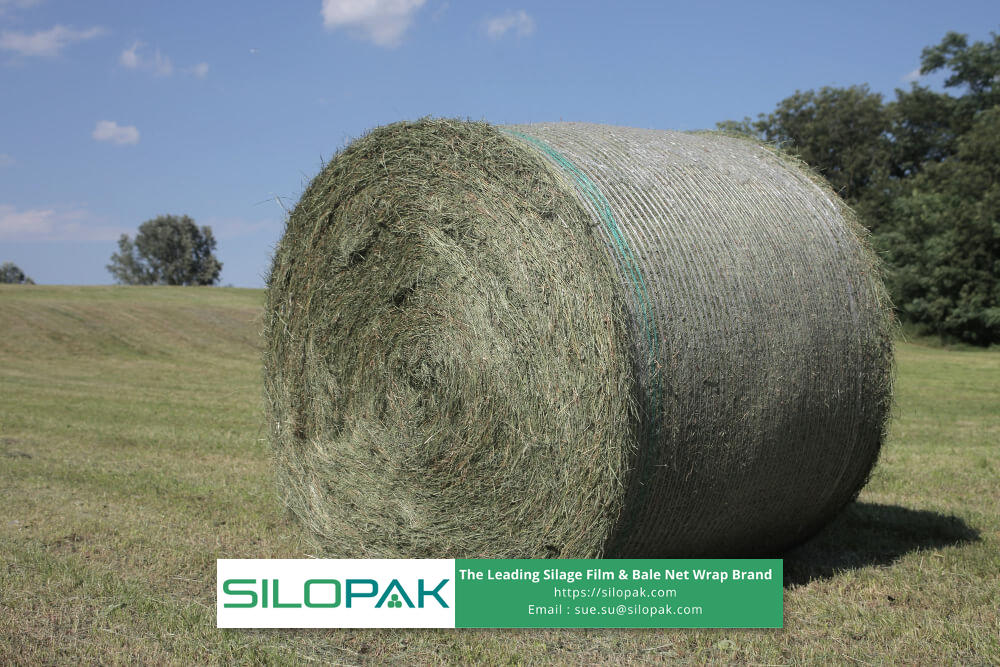
Feed resources on farms usually require supplements from forages that contain protein, mineral, and energy. However, you don’t have to buy these protein and energy supplements because you can get them from what you wrap in net or plastic such as alfalfa hay. Beef cattle are good at digesting this kind of hay. America is a country that grows quite a lot of Alfalfa. Every year there is about 1500 to 2000 pounds of protein from 1 hectare of alfalfa plants that people plant there.
Alfalfa itself is a legume in the same family as peas, beans, birdsfoot trefoil, vetch, sainfoin, and anchovies. This plant is able to fix nitrogen and then extract it to put it into vegetable protein. The number one legume crop in several American states is vital to the beef industry throughout the country. It’s all because alfalfa hay contains a number of benefits such as giving energy, minerals, and protein even when dry. You can dry alfalfa plants and then wrap them into big or small bales for various purposes.
contents
How to Bale Alfalfa Hay
High quality alfalfa hay is what today’s farmers are looking for. Their sense of smell finds its own solace when opening a bale of alfalfa. The distinctive aroma of alfalfa conveys a feeling of freshness on the farm. Farm animals also enjoy eating this delicious and nutritious dish. Then, the eyes also get a glimpse of heaven by seeing the adorable shape of the bales. Sometimes there are still lots of green leaves in it.
There’s no more extraordinary feeling than an alfalfa hay bale removal day, right? So, you can also make alfalfa hay bales with the following easy steps:
Cutting Alfalfa
However, you have to find alfalfa plants that are healthy and growing well. Cut the alfalfa according to the right level of maturity.
Dry Alfalfa
Ideal alfalfa hay drying conditions will determine forage quality during winter or extremely dry seasons.
Alfalfa Wrapping
You have to be quick in wrapping the alfalfa according to the optimal humidity level. Don’t forget to provide silage film from a competent company so that the alfalfa hay bales produce high quality energy for the beef cattle.
Closed Bale Storage
Distribute the bales of alfalfa hay to storage areas with conducive conditions where there are pallets that support the bales so that they do not come into direct contact with the ground. You also need to cover the bales so that they don’t get any direct sunlight exposure.
Alfalfa Hay Energy Source
The nutritional value of forage alfalfa is among the highest of all hay classes. It’s not surprising that many farmers use alfalfa as the best source of energy for their feed. All their livestock not only receive carbohydrate intake as a source of energy but also protein which strengthens the body. However, there are still those who underestimate alfalfa as an excellent source of protein.
We know that beef cattle usually receive a ration with high protein but lack energy. Especially for cows that are at the end of their pregnancy until after giving birth. These cows really need hay with high energy quality so that they gain weight again. They not only finish giving birth but also provide milk for their kids and get postpartum for 40 to 90 days.
Livestock or beef cattle that consume alfalfa hay usually recover faster after giving birth and tend to grow faster too. The milk yield also tends to be greater and they don’t get sick easily than livestock that eat other forage.
Sometimes breeders also provide various types of dry grass thinking that the dry material content will be equivalent or better than alfalfa hay. However, it turns out that grass hay often makes it difficult for ruminants to digest it. While alfalfa hay makes cows digest it quickly. It’s about half a time faster than grass hay. That way, nutritional intake in the form of energy and protein from alfalfa will increase and beef cattle will quickly receive another injection of energy.
Quality Plastic Film for Alfalfa Hay
There are various studies accompanying the rules regarding the number of layers of plastic film to make bales of alfalfa hay. We know that wrapping bales for alfalfa is not without purpose. There are many nutrients such as vitamins and minerals in alfalfa that you can still provide even in difficult times like winter.
Let’s take the example of green leafy alfalfa hay which contains quite high levels of carotene or vitamin A.
Beef cattle may experience a deficiency in vitamin A. And good quality alfalfa hay can meet their needs. Of course, you can also overcome stress in cows by providing this feed. Later there will be a therapeutic effect other than the vitamin A that cows usually get.
Stress or fever in animals can also slowly disappear. Then, the use of plastic film to wrap alfalfa hay bales plays an important role in preventing vitamin A from being lost after long term storage.
So, it’s a good idea after you harvest alfalfa with a high source of vitamin A, you can immediately wrap it using a baler wrapper machine with premium resin plastic wrapping film. At least use more than two layers of film for preserving round bales of alfalfa hay so that the bales maintain consistent shape and nutrition.
Silopak as the film plastic silage and net wrap producer can help you to maintain the nutrition of alfalfa hay. We have provided many products of film plastic and net wrap for bales since 2011. Our customers have proven themselves if our products can last longer than 18 months in protecting their bales. Big or small and round or rectangle bales, all kinds of baleages can be the best quality of agricultural products if you wrap them with our products.

